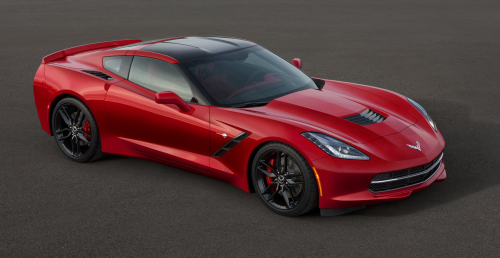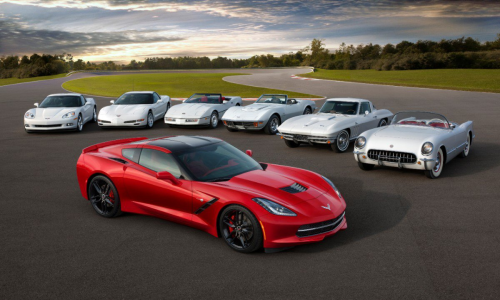

Described as the “best Corvette ever” by Mark Reuss, President of General Motors North America, the car has been given the Stingray name to emphasise this distinction. The car is said to be “all new, from the ground up.”
“One of the things we really wanted to do with the Corvette was to upgrade every aspect of the car, … We looked everywhere in the car to see what was the latest and greatest, most advanced technology we could use,” explains Tadge Juechter, Executive Chief Engineer, Chevrolet Corvette, in the 2014 Corvette Reveal Webcast.
This included the use of lightweight materials.
The use of composite materials includes carbon fibre in the hood and roof panels, sheet moulding compound (SMC) (of a lighter density than previously used) in the fenders, doors, rear quarter panels and rear hatch panel, and ‘carbon nano composite’ (described as “an advanced blend of traditional composite material and carbon fibre”) for the underbody panels.
| “For the first time we’re bringing carbon fibre all the way down to the entry level vehicle. We used it in the roof and the hood because we want to take weight off the front and off the high panels of the vehicle to drive the centre of gravity down.” |
| Tadge Juechter, Executive Chief Engineer, Chevrolet Corvette |
Combined, these materials save approximately 37 pounds (17 kg) versus the previous body structure.
The 2014 Corvette Stingray has an aluminium frame structure, which is 57% stiffer and 99 lbs (45 kg) lighter than the current steel frame.
The interior also features carbon fibre and aluminium, and the seats are based on a lightweight magnesium frame.
“For the first time we’re bringing carbon fibre all the way down to the entry level vehicle. We used it in the roof and the hood because we want to take weight off the front and off the high panels of the vehicle to drive the centre of gravity down,” reports Juechter.
The 2014 Corvette Stingray is the most powerful standard model ever, with an estimated 450 hp (335 kW) and 450 lb.ft. of torque (610 Nm). It is able to accelerate from 0-60 in less than 4 seconds and achieve more than 1g in cornering grip. It is also expected to be the most fuel-efficient Corvette, exceeding the EPA-estimated 26 mpg of the current model.
The new Stingray will be built at GM’s Bowling Green, Kentucky, assembly plant, which has undergone a US$131 million upgrade.
The 2014 Corvette Stingray coupe goes on sale in the third quarter of 2013. No price has been released yet.
See also:






